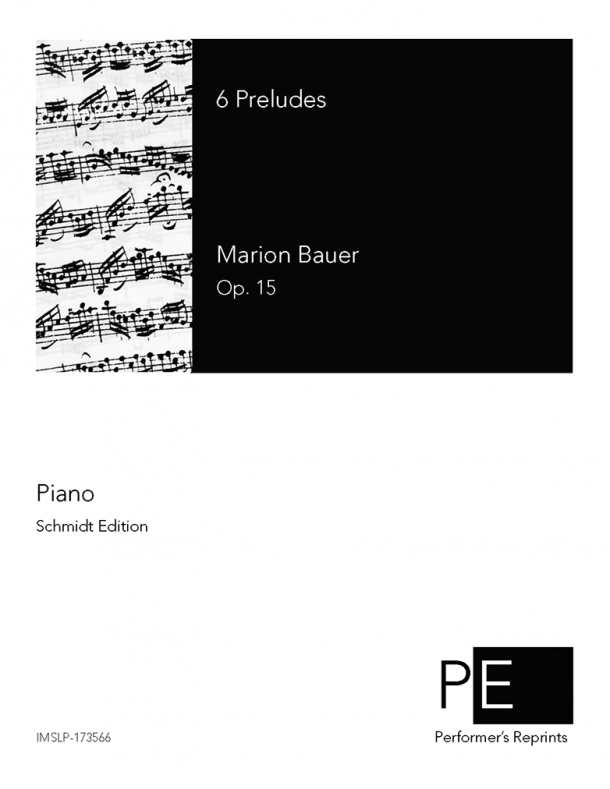Obscure Music Monday: Bauer's Six Preludes
Marion Bauer (Aug. 15, 1882 - Aug. 9, 1955) was an American composer, music critic, teacher, and writer. Born in Walla Walla, Washington, she was the youngest of seven children. Her father noticed her musical inclinations and she began studying piano with her elder sister Emilie, who was 17 years older than her.
After finishing high school, Bauer traveled to New York City to be with her sister Emilie, and focus on composition. She also studied with Henry Holden Huss and Eugene Heffley, and through some other connections, Bauer went to Paris to study with Nadia Boulanger. In return for composition lessons, Bauer taught her English. Bauer came back to America after a year in Paris, and continued to study with Heffley, and also began teaching piano and music theory on her own. Just a few years after that she returned again to Europe, this time to study with Paul Ertel in Berlin. She also studied later on with Andre Gedalge at the Paris Conservatory, who had also taught Maurice Ravel and Darius Milhaud. Bauer would go on to teach and lecture at New York University, Juilliard, and Columbia University. She also helped found the American Music Guild, the American Music Center, and the American Composer's Alliance, and also served on the board of important organizations.
As a composer, her music was enjoyed by audience goers and critics alike; her music was contemporary, but on the conservative side. It was suggested that her Six Preludes be names Six Modern Preludes, but she reportedly said "what is modern in 1922 will probably be quite conventional in 1940."
Each of these six movements are very distinct with their own personalities, are titled by their key, beginning in D major, which is also just for left hand. Despite being for just one hand, it is surprisingly rich in texture, with a wistful melody, and some extended harmonies on occasion. No. 2 has some similar harmonies, though a bit more upbeat. After the right hand plays a few notes, you hear the left hand respond similarly. The third prelude, in D minor, is a whirlwind of a movement, highly chromatic and over in just a minute. No. 4 in F# continues as the others do in to interesting harmonic waters; some wide open chords make for intriguing listening. The penultimate movement in B minor is melancholic and longing throughout, even ending on a chord that feels almost unresolved. The final movement in F minor is dramatic and startling in the opening measures, with an insistent line in the left hand throughout. It ends as it began, with some dramatic flare.
Here's a recording of this wonderful work for you to enjoy!


